Every second counts in today’s competitive market. Real-time analytics enables businesses to capture, analyze, and act on data instantly. Whether monitoring website traffic, tracking inventory levels, or detecting fraud, companies can optimize performance and increase profits.
With AI-driven insights and cloud-based platforms, real-time analytics transforms decision-making, helping businesses drive growth. Discover how real-time data can accelerate revenue and boost operational efficiency.
Real-Time Data Definition and Its Role in Business Growth
Real-time data allows businesses to access, process, and analyze information instantly, leading to faster decision-making and improved efficiency.
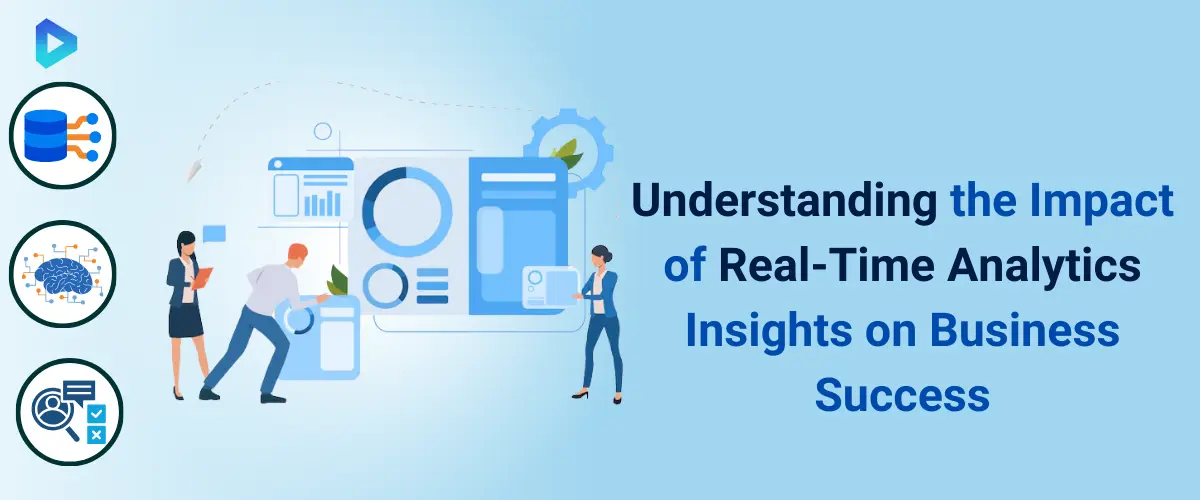 What Is Real-Time Data? A Comprehensive Overview?
What Is Real-Time Data? A Comprehensive Overview?
Real-time data refers to information that is processed as soon as it is generated. Unlike traditional batch processing, real-time data updates continuously, ensuring businesses always have the most current insights.
It is commonly used in industries like finance, healthcare, and e-commerce to optimize operations and customer experiences. With advancements in cloud computing and AI, real-time data analytics has become more accessible, allowing organizations of all sizes to leverage its benefits.
How Real-Time Data Helps Businesses Make Faster Decisions?
In today’s fast-paced market, businesses that rely on real-time data gain a competitive edge. By accessing live insights, organizations can identify trends, predict customer behavior, and respond to market shifts instantly.
Retailers, for example, use real-time analytics to adjust pricing and inventory based on demand. Similarly, logistics companies optimize delivery routes in real time, reducing costs and improving service. The ability to make informed decisions quickly leads to increased efficiency, reduced risks, and higher profitability.
Differences Between Real-Time and Batch Data Processing
Batch data processing involves collecting and analyzing data at scheduled intervals, making it ideal for historical analysis and large-scale reports. However, it lacks the immediacy required for time-sensitive decisions.
In contrast, real-time processing updates data instantly, enabling businesses to react swiftly to changes. Industries like cybersecurity and online trading rely on real-time processing to detect fraud and execute trades within seconds. While batch processing is useful for long-term trends, real-time data processing is essential for organizations needing instant insights and responsiveness.
The Role of Real-Time Data Processing in Revenue Growth
Real-time data processing empowers businesses to react instantly to market trends, optimize customer experiences, and increase profitability.
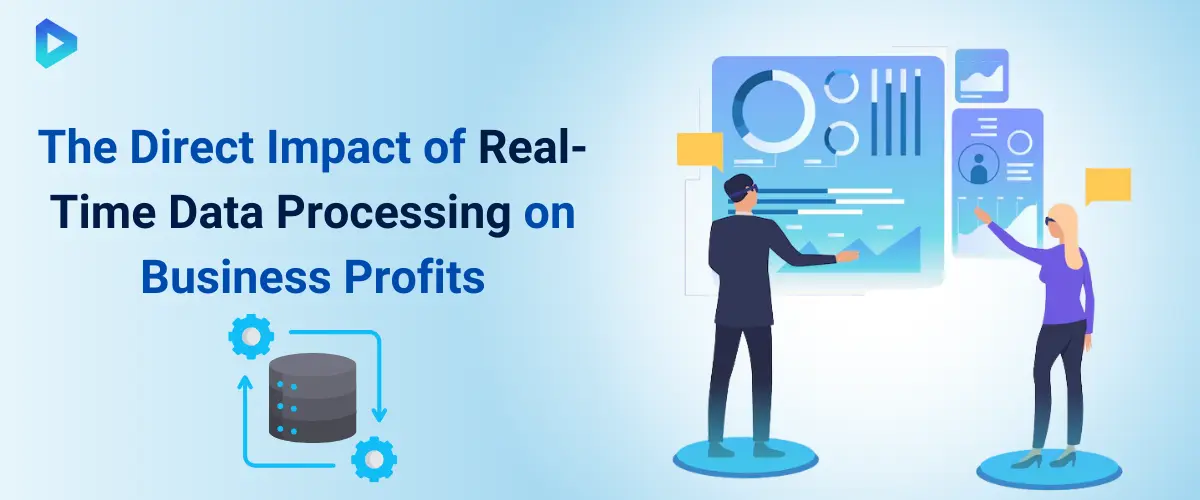 How Real-Time Data Processing Improves Decision-Making?
How Real-Time Data Processing Improves Decision-Making?
By processing data as it is generated, businesses can make well-informed decisions faster. Unlike batch processing, which works with delayed insights, real-time data processing provides immediate visibility into customer behavior, operational performance, and market conditions.
For example, e-commerce platforms adjust pricing dynamically based on demand, while financial institutions detect fraudulent transactions in real time. This ability to act quickly improves customer satisfaction, reduces risks, and drives revenue growth.
Key Technologies Powering Real-Time Data Processing
Several advanced technologies make real-time data processing possible:
- Stream Processing Engines – Tools like Apache Kafka and Apache Flink allow businesses to process continuous data streams efficiently.
- Cloud Computing – Cloud platforms such as AWS, Google Cloud, and Azure provide scalable infrastructure to handle massive real-time workloads.
- Artificial Intelligence & Machine Learning – AI-driven analytics enhance predictive capabilities, helping businesses anticipate trends and automate responses.
- Edge Computing – This enables data processing closer to the source, reducing latency and improving speed in IoT and industrial applications.
These technologies ensure that businesses can process vast amounts of data in real time, making them more agile and competitive.
Best Practices for Implementing Real-Time Processing
To successfully implement real-time data processing, businesses should follow these best practices:
- Define Business Goals – Identify key areas where real-time insights will drive value.
- Choose the Right Tools – Select scalable and reliable technologies suited for your industry needs.
- Ensure Data Quality – Real-time decisions are only as good as the accuracy of the data being processed.
- Optimize Infrastructure – Invest in cloud-based or hybrid solutions to manage high data loads efficiently.
- Monitor and Improve Continuously – Regularly assess system performance and refine processes for better results.
By leveraging real-time data processing effectively, businesses can unlock new growth opportunities, enhance operational efficiency, and stay ahead of competitors.
Real-Time Data Streaming for Faster Business Insights
Real-time data streaming allows businesses to process and analyze data as it is generated, enabling quicker insights and immediate actions.
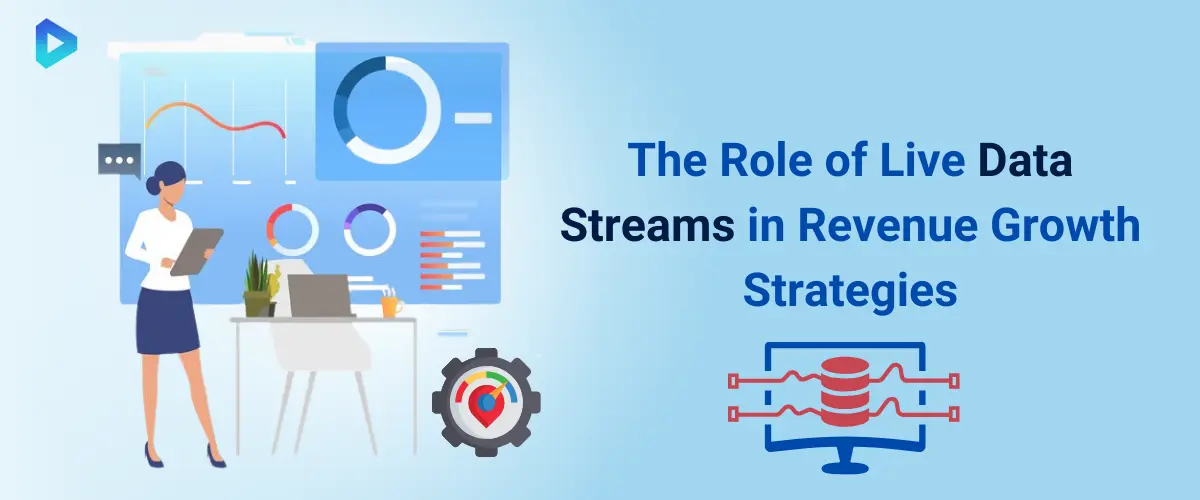 What Is Real-Time Data Streaming and How It Works?
What Is Real-Time Data Streaming and How It Works?
Real-time data streaming is the continuous flow of data from various sources to processing systems without delays. Unlike traditional batch processing, where data is collected and analyzed in intervals, streaming ensures immediate insights.
This technology is widely used in industries like finance, healthcare, e-commerce, and cybersecurity. For example, stock market platforms rely on real-time data streaming to update stock prices instantly.
Similarly, ride-sharing apps process live location data to optimize routes. Streaming data is managed using technologies like Apache Kafka, Amazon Kinesis, and Google Pub/Sub, which ensure high-speed and low-latency processing.
Benefits of Data Streaming for Businesses
Implementing real-time data streaming offers several advantages:
- Instant Decision-Making – Businesses can react quickly to changing conditions, such as adjusting inventory based on demand.
- Enhanced Customer Experience – Live updates improve user interactions, such as personalized product recommendations.
- Fraud Detection and Security – Financial institutions use real-time monitoring to detect suspicious transactions immediately.
- Operational Efficiency – Companies can streamline logistics and supply chain management with real-time tracking.
By leveraging data streaming, businesses gain a competitive edge and improve overall efficiency.
Challenges in Implementing Real-Time Data Streaming Solutions
Despite its benefits, real-time data streaming presents challenges:
- High Infrastructure Costs – Maintaining low-latency data streams requires significant investment in cloud and on-premise resources.
- Scalability Issues – As data volume increases, businesses must ensure their systems can handle large-scale streaming workloads.
- Data Accuracy and Quality – Inconsistent or incomplete data can lead to incorrect insights, making data validation crucial.
- Integration Complexity – Connecting real-time data with existing analytics platforms can be complex and requires skilled expertise.
- Security and Compliance – Protecting data from breaches while ensuring regulatory compliance is a constant challenge.
Overcoming these challenges requires businesses to invest in robust technologies, adopt best practices, and continuously optimize their streaming infrastructure.
Real-Time Data Warehouse for Scalable Analytics
A real-time data warehouse enables businesses to process and analyze large volumes of data instantly, allowing for faster and more informed decision-making.
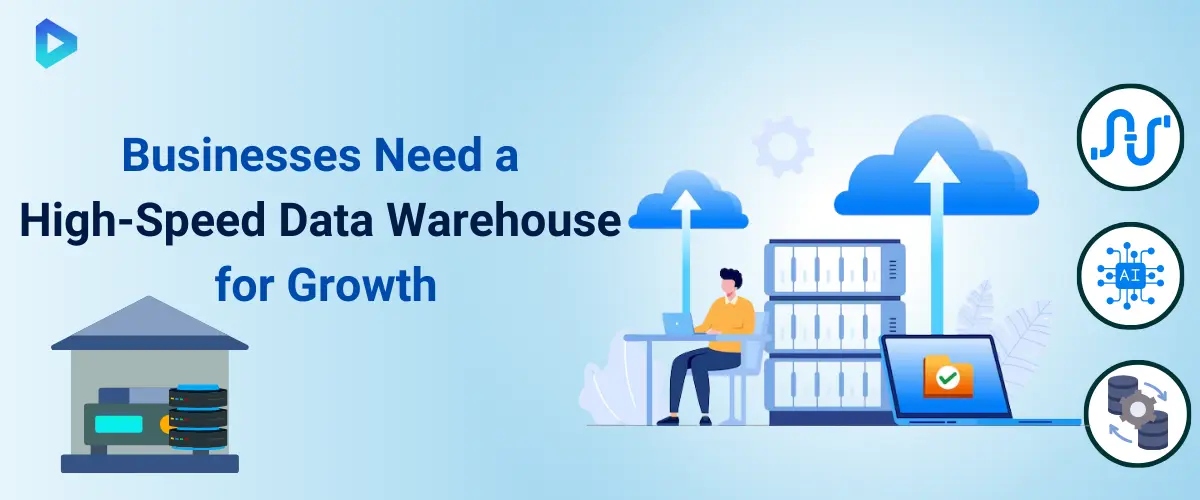 What Is a Real-Time Data Warehouse?
What Is a Real-Time Data Warehouse?
A real-time data warehouse is a system that continuously collects, processes, and stores data as it is generated. Unlike traditional data warehouses, which update data periodically, real-time data warehouses provide immediate insights, enabling organizations to react to changes in real time.
Industries like finance, e-commerce, and healthcare leverage real-time data warehouses to monitor transactions, detect fraud, and optimize customer interactions. These systems are powered by technologies such as Snowflake, Google BigQuery, and Amazon Redshift, which support high-speed data processing and integration with analytics tools.
Differences Between Traditional and Real-Time Data Warehouses
Traditional and real-time data warehouses serve the same purpose but operate differently:
- Data Processing: Traditional warehouses update data in scheduled batches, while real-time warehouses update data continuously.
- Latency: Traditional systems may take hours or days to refresh, whereas real-time warehouses provide insights instantly.
- Use Cases: Real-time warehouses support applications requiring immediate responses, such as fraud detection and live analytics.
- Scalability: Modern real-time warehouses use cloud-based solutions that scale dynamically based on data volume and business needs.
By transitioning to real-time data warehousing, companies can gain instant access to critical information, enhancing business agility.
How a Real-Time Data Warehouse Enhances Business Intelligence?
A real-time data warehouse plays a crucial role in business intelligence (BI) by:
- Providing Instant Insights – Businesses can analyze live data to make fast, informed decisions.
- Improving Customer Experience – Personalized recommendations and customer service responses are powered by real-time analytics.
- Optimizing Operational Efficiency – Supply chains, inventory, and logistics can be adjusted in real time.
- Enhancing Predictive Analytics – AI-driven forecasting models perform better with continuously updated data.
- Reducing Data Silos – Centralizing data sources allows for seamless collaboration and reporting across departments.
With a real-time data warehouse, businesses can turn raw data into actionable insights, driving revenue and efficiency.
Real-Time Data Integration for Seamless Operations
Real-time data integration ensures that businesses have access to the most current data, improving decision-making and operational efficiency.
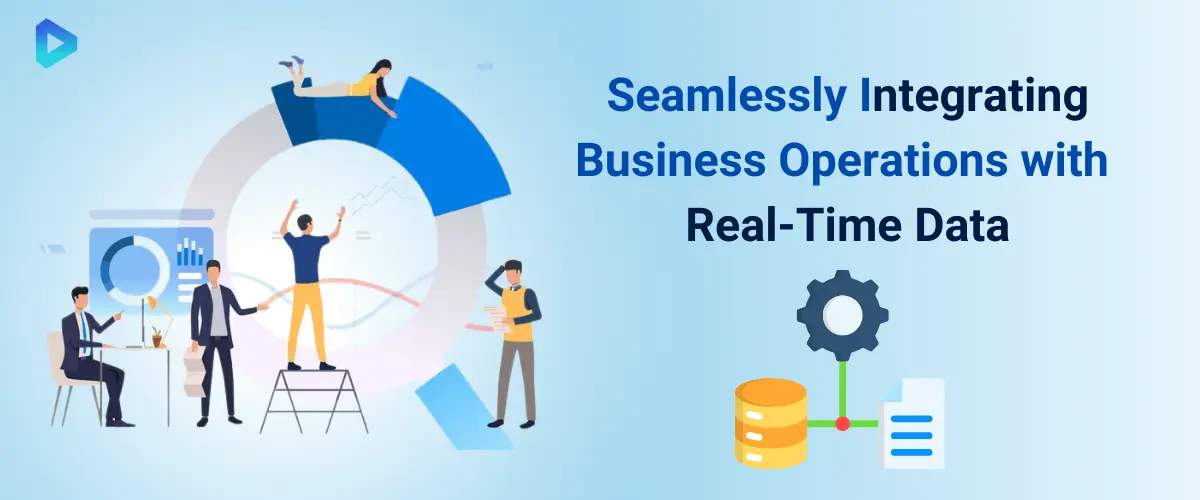 How Real-Time Data Integration Connects Business Systems?
How Real-Time Data Integration Connects Business Systems?
Real-time data integration allows various business applications and platforms to communicate instantly. It ensures that updates in one system are immediately reflected in others, eliminating data silos.
For example, in e-commerce, real-time integration connects inventory management, payment gateways, and customer relationship management (CRM) systems.
This seamless connectivity enables businesses to:
- Provide accurate stock updates to customers.
- Process transactions and update financial records instantly.
- Personalize marketing campaigns based on user activity.
By leveraging APIs, middleware, and cloud-based platforms, companies can integrate real-time data across multiple departments for improved efficiency.
Challenges in Real-Time Data Integration and Solutions
Implementing real-time data integration comes with challenges that businesses must address:
- Data Latency – Ensuring minimal delays when transferring data between systems. Solution: Use event-driven architectures and in-memory processing.
- Data Inconsistency – Keeping data accurate and synchronized across platforms. Solution: Implement data validation and error-handling mechanisms.
- Scalability Issues – Handling increasing volumes of data without performance degradation. Solution: Use cloud-based integration tools that scale dynamically.
- Security and Compliance Risks – Protecting sensitive data during real-time transfers. Solution: Implement encryption, access controls, and compliance frameworks.
Addressing these challenges ensures that real-time data integration delivers value without disruptions.
Best Practices for Implementing Real-Time Data Integration
To maximize the benefits of real-time data integration, businesses should follow best practices, including:
- Choosing the Right Integration Tools – Use platforms like Apache Kafka, MuleSoft, or Talend for seamless connectivity.
- Implementing Event-Driven Architectures – Enable data to flow based on triggers and business events.
- Ensuring Data Quality and Consistency – Use data validation and governance frameworks to maintain accuracy.
- Monitoring Performance Continuously – Track integration efficiency with real-time dashboards and alerts.
- Automating Data Workflows – Reduce manual processes and enable self-healing integrations for improved reliability.
By integrating data in real time, businesses can respond faster to market demands, optimize operations, and improve customer experiences.
Real-Time Data Ingestion: Handling Large Volumes of Information
Managing large volumes of data efficiently requires real-time data ingestion, ensuring businesses can process, analyze, and act on data instantly for better decision-making and operational efficiency.
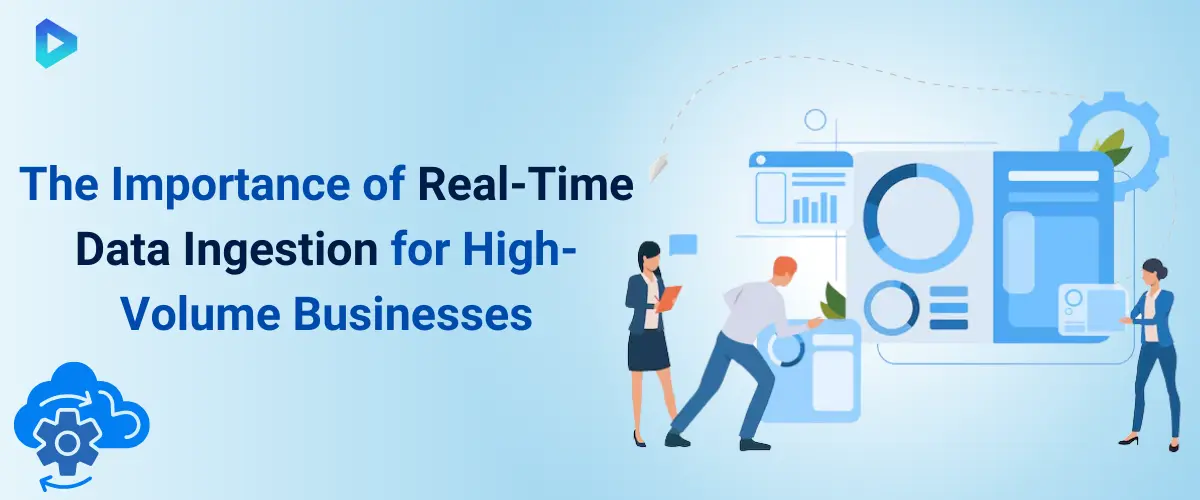 What Is Data Ingestion and Why It Matters?
What Is Data Ingestion and Why It Matters?
Data ingestion is the process of collecting and transferring data from multiple sources into a storage or processing system. It plays a critical role in real-time analytics by enabling businesses to act on data as it arrives.
Unlike batch processing, real-time ingestion ensures data is continuously updated, reducing latency and improving responsiveness. Organizations leveraging real-time ingestion can enhance customer experiences, streamline workflows, and gain a competitive edge.
From IoT devices to financial transactions, real-time data ingestion is transforming industries by providing instant insights and automation.
Key Features of Real-Time Data Ingestion Tools
Effective real-time data ingestion tools come with several essential features that ensure seamless and efficient data handling:
- Scalability: The ability to handle increasing data volumes without performance degradation.
- Low Latency: Ensures near-instant data processing for real-time insights.
- Fault Tolerance: Automatic recovery from failures to ensure data integrity.
- Data Transformation: Supports data cleaning, enrichment, and conversion during ingestion.
- Security & Compliance: Implements encryption, authentication, and access controls to protect sensitive data.
Businesses investing in these features can ensure robust, secure, and efficient real-time data ingestion to support their analytical and operational needs.
Overcoming Bottlenecks in Real-Time Data Ingestion Processes
Despite its benefits, real-time data ingestion presents several challenges, including network congestion, processing latency, and integration complexities.
Overcoming these bottlenecks requires a strategic approach:
- Optimizing Network Bandwidth: Implementing compression techniques and efficient data routing to reduce network congestion.
- Distributed Processing: Utilizing cloud-based or edge computing solutions to distribute workloads effectively.
- Efficient Data Filtering: Filtering and prioritizing data streams to ensure only relevant data is processed in real-time.
- Automation & Monitoring: Deploying automated monitoring tools to detect and resolve issues before they impact operations.
By addressing these challenges, organizations can maximize the potential of real-time data ingestion, leading to faster decision-making and improved business performance.

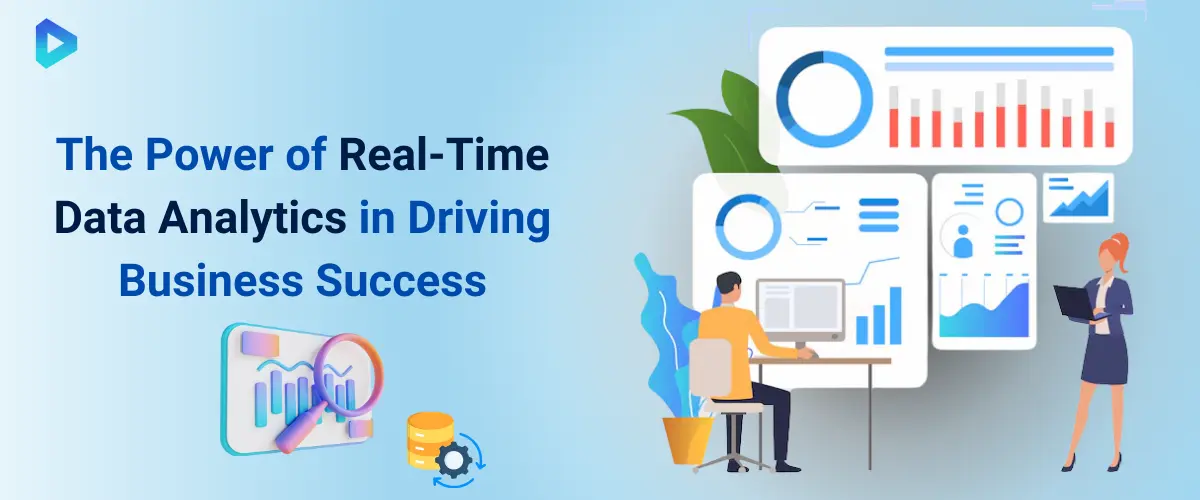

Let's Discuss Your Idea!
Send us your request using the form below.
Contact Info
Our contacts
Thank You!
We will respond to you within 24 hours.